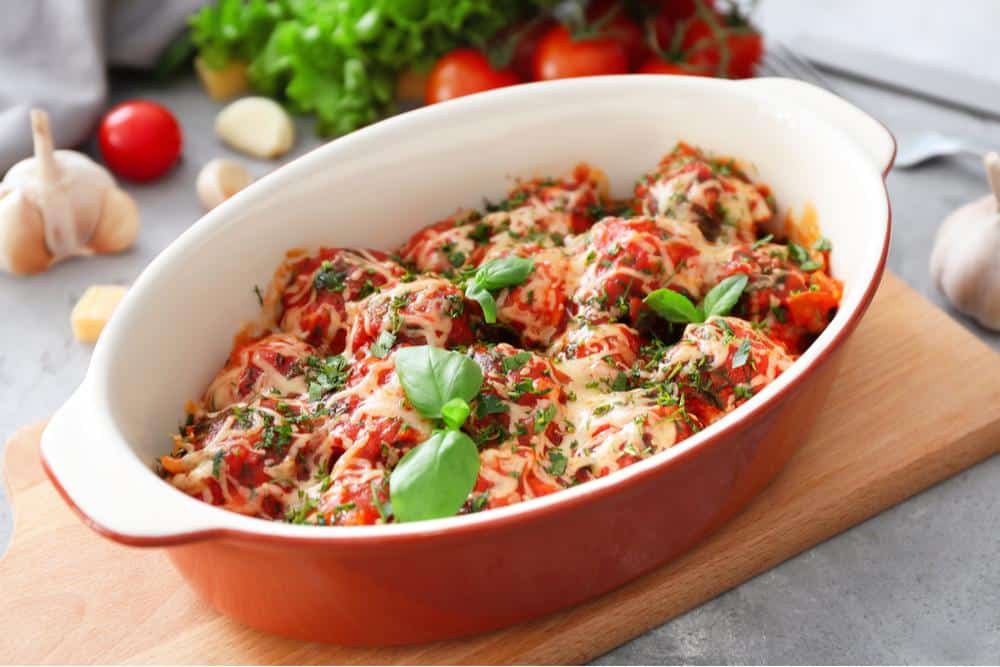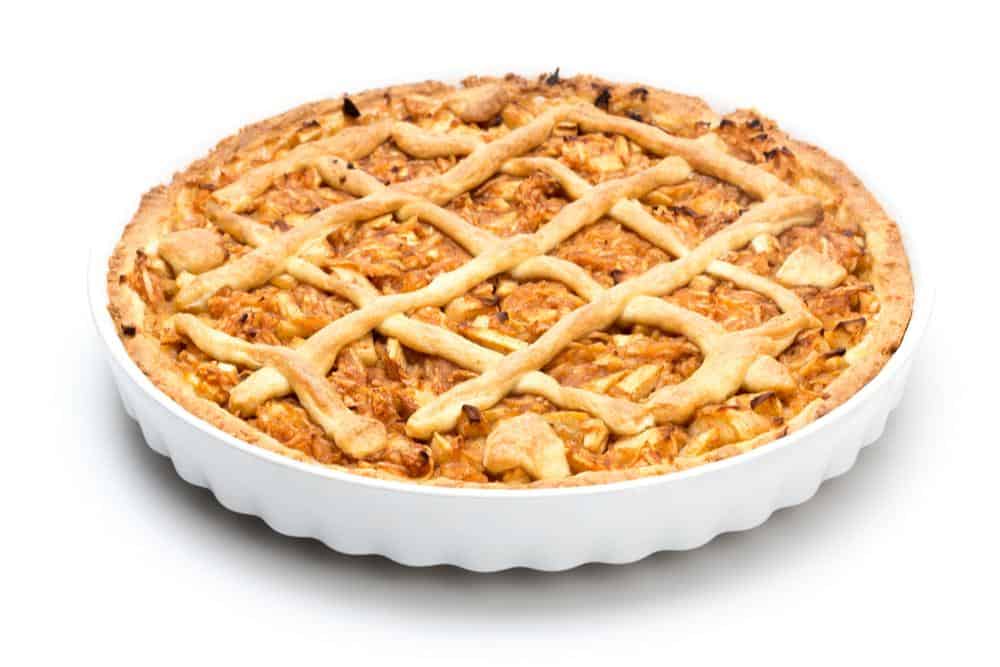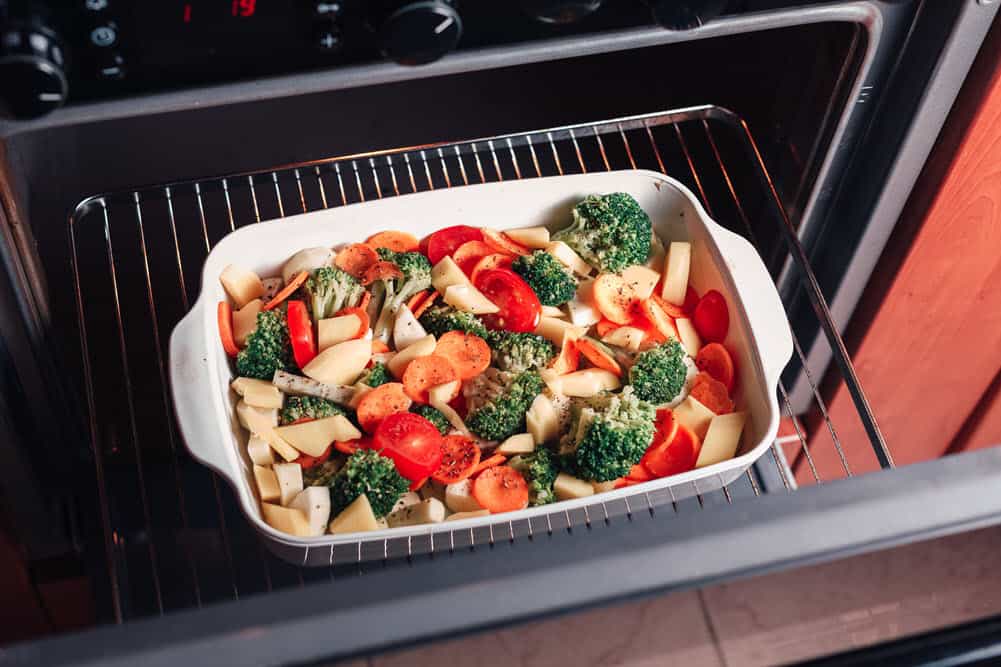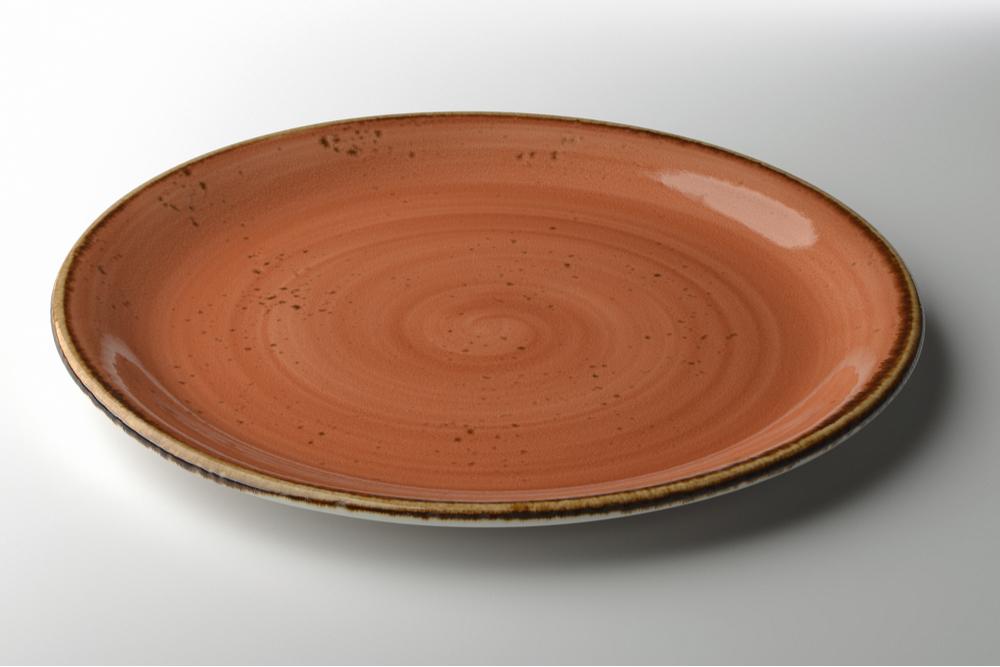Ceramic cookware is a fantastic addition to any kitchen. It's solid and easy to handle. Ceramic also offers beautiful designs and can add lots of taste & style to your cookware collection.
Ceramic also has incredible qualities like the ability to conduct electricity better than some metals. This immediately may create a cloud in our minds in terms of safety, is ceramic safe to use for baking? Can you put ceramic in the oven?
Keep reading to learn more about what ceramic really is, the safety measures to take when using it and how to properly clean it.
Ceramic is a hard material generally made from clay, water, and various powders. These are then placed in a kiln to cook, resulting in a solid and firm material.
Ceramics dated back thousands of years and were used for art, food storage, and housing material. It was made from crushed clay, shells, and crushed sand.
Back then, ceramic was baked in the sun or in underground kilns.
Today, there are several different types of ceramic. These are all used in a variety of industries and can be placed into four category types:
Refractory ceramic is made to hold up against very high temperatures. They are typically found throughout modern manufacturing and can hold up against temps of 1000 degrees. They can withstand more heat than metal and are used for hot surfaces in industrial processes.
Technical ceramics, also known as advanced ceramics or engineered ceramics, are ceramics characterized by high-performing technical properties. These types of ceramics are characterized as having thermal, mechanical, or electrical properties. They are used to replace polymers, refractory metals, and metals.
Structural ceramics consist of specific properties that allow them to withstand corrosion or erosion in harsh environments. They can also withstand high temperatures and have a strong bond to enable these ceramics to be utilized in a variety of areas and industries.
Structural ceramics are used in: aerospace vehicles, gas turbines, cutting tools for machinery, and an abrasive for polishing.
A great way to tell if ceramic is oven safe is to check the label. The label will usually state it's oven safe. However, it may be a symbol if the words aren't there. The emblem would mean microwave and oven safe.
You could typically also find numbers located on the bottom of the ceramic that indicate the maximum temperature it can resist in an oven (or toaster oven). If neither indicator is there, you could look up the brand name followed by "oven-safe."
If it's not safe to bake with, avoid using it in the oven.
Yes, ceramic can be used for baking. It's ideal for baking sweets and other dishes.
Baking food in ceramic is excellent because it tends to cook food evenly. This process of even cooking results from the heat evenly distributed throughout the ceramic.
With ceramic, you never need to be concerned about burned food. The issue of food being cooked on the outside and undercooked on the inside won't be an issue, either.
You can even roast and slow cook in ceramics. You can get a full suite of ceramic bakeware. They make ceramic dishes, ceramic bowls, and you can even get a ceramic casserole dish.

A ceramic casserole dish with delicious meatballs
The only downside is that when baking sweets in the oven, ceramic can cause desserts to get too brown.
This over-browning happens because of heat conduction. So, it's best to keep a close eye on the temperature and timing when baking sweets in ceramics.

You'll want to monitor your pie crusts for over browning when in a ceramic pan
Despite this, the dishes still turn out beautifully. Even if the foods are thick inconsistently, they will cook through and through. When heat touches ceramic, although it may be slow to warm up in an oven, it will trap the heat for quite a while.

A ceramic baking dish coming out of the oven
It's essential to keep in mind to allow the ceramic to cool off once it's out of the oven. A fast temperature change can cause it to crack.
Generally, cooking or baking with ceramic has several advantages. First, despite its lifespan compared to other kitchenware, it's much more beneficial health-wise and can last long if properly taken care of.
Ceramic pans, in particular, have a special coating that doesn't contain any toxins. However, one major problem other nonstick types of cookware have is the nonstick coating contains very harmful toxins. These toxins can negatively affect your health over a period of time.
However, ceramic only consists of safe coatings that you don't have to worry about seeping into your food.
Because of the coating in ceramic, you won't have to be concerned about adding too much butter or oil to your food. You can freely saute it instead of having to cook with other methods that may not lock in your food's flavors (like boiling or steaming.)
One of the best benefits of ceramic is the non-reactive coating. This means a ceramic pot or pan's coating will not break down once in contact with foods high in acidity.
A pan or pot that doesn't have this coating can pose an issue. The chemicals on the pan can leak into the food and alter its color and taste. However, the non-reactive coating on ceramic helps keep the taste and quality of cooked and baked food.
Another great benefit of ceramic is it's effortless to clean. Baking and cooking are always fun but cleaning up can take some time depending on the dish. Ceramic allows foods to be easily scrubbed or wiped off. This will easily cut the cleaning time in half, which is a huge plus.
A fantastic way to save money is to purchase ceramic cookware. You won't have to worry about sacrificing cash for high quality. Ceramic pots and pans tend to be very high quality at a budget cost.
Also, you won't need to use as much power when cooking on ceramic. Even if you cook foods on the stove at low or medium heat in ceramic, your food still cooks thoroughly very quickly.
A question that commonly comes up is which is better for baking? Ceramic or Porcelain Bakeware?
First, not all ceramic and porcelain are safe for oven use. You'll want to make sure that your product is oven proof before thinking about using it in a hot oven.
Porcelain is actually a type of ceramic. A porcelain dish goes through a more refined process and is a bit more durable and expensive than ceramic.

A ceramic dish isn’t quite as elegant as a porcelain dish
Both can be used for baking. Porcelain is a bit more durable and is more expensive. Le Creuset utilizes colorful porcelain enamel coating on their world-famous cookware. Ceramic ovenware isn't nearly as high-end, but it gets the job done - and usually for a much lower price. You really can't go wrong with either material.
Porcelain is a bit more elegant and is often used for dinner sets and more elegant serving bowls. The overall appearance is a bit more aesthetically pleasing than you can achieve with a ceramic plate or ceramic bowl.
Your ceramic may last for quite some time if you take proper care of it. You can implement several tips to get the most wear out of your ceramic.
Although stainless steel utensils are great to cook with, unfortunately, they aren't suitable for ceramic. It's best to avoid them since they can easily scratch and remove the ceramic coating. Once this happens, food will become stuck and difficult to get off.
Instead, use utensils made of silicone, wood, or plastic. These are sturdy yet much more gentle, and they will allow you to use your ceramic worry-free.
Cooking foods on high heat on ceramic can ruin the dish. It's best to cook on medium or low heat to avoid potential damage to the coating.
Ceramic as a material is very tough and sturdy, so you don't need to cook at high heat to have thoroughly cooked foods. Your food could still be cooked perfectly with medium or low heat.
However, if you're using ceramic in an oven, it's safe to cook on high if needed.
Ceramic bakeware is susceptible to thermal shock - which is when a rapid temperature change can damage your ceramic or glass bakware. For best results, if you’re taking something out of the refrigerator or freezer - don’t immediately bake it with the oven temperature on high. It is best to let the dish sit for a bit to warm up closer to room temperature before cooking your meal in ovens or toaster ovens.
Although tempting, it's best never to leave food in a ceramic pan. Doing so could potentially ruin the coating and cause damage. Also, it could perpetuate the breeding of bacteria due to the food being exposed to air and changing temperatures.
A great way to choose oven-safe ceramics is to search for them. If you're looking to purchase ceramic ware safe for the oven, specifying "oven-safe" could help you find what you're looking for.
Certain brands specialize in making oven-safe ceramics. These brands include Corelle, Bentgo, Bruntmor, Sweese, and more.
If ceramic isn't safe in the oven, it could pose issues. The first being it could shatter into pieces while it's in the oven, which would cause shards to go into the food.
Otherwise, it could crack in half and cause food to seep or spill onto the oven floor. It's crucial to remember you can only put ceramic in the oven if it's safe to do so. If it isn't marked or labeled as oven-safe, it's recommended not to try using it in the oven.
The shattering and cracking occur when the glaze or coating isn't waterproof. It leaves the ceramic and any other materials in it unprotected. This leaves the ceramic unable to withstand certain temperatures of heat.
Even if a ceramic dish isn't oven-safe, remember you can still use them. The ceramic just can't be used for cooking foods in the oven.
